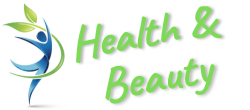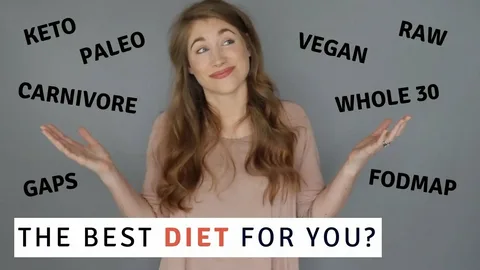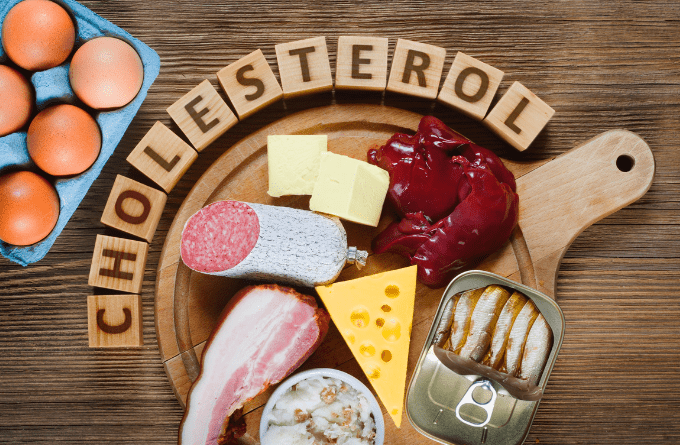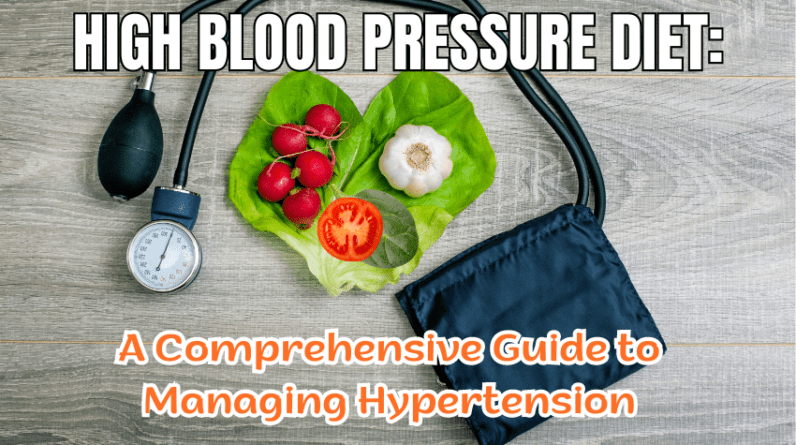
Unveiling the High Blood Pressure Diet: Learn how to effectively manage hypertension and promote heart health with smart dietary choices.
Introduction
In today’s fast-paced and stressful world, high blood pressure, also known as hypertension, has become a prevalent health issue affecting millions of people worldwide. Fortunately, by adopting a healthy and balanced diet, you can effectively manage and control your blood pressure levels. This article will guide you through an informative journey about the high blood pressure diet, offering valuable insights and practical tips to help you make informed choices for a healthier lifestyle.
1. Understanding High Blood Pressure
High blood pressure occurs when the force of blood against the artery walls is consistently too high. This is often considered a silent killer as it can remain asymptomatic for prolonged periods of time, gradually damaging the arteries which can lead to severe health complications such as heart disease, stroke, and kidney problems. While genetics and lifestyle factors contribute to hypertension, making changes to your diet can significantly impact your blood pressure readings.
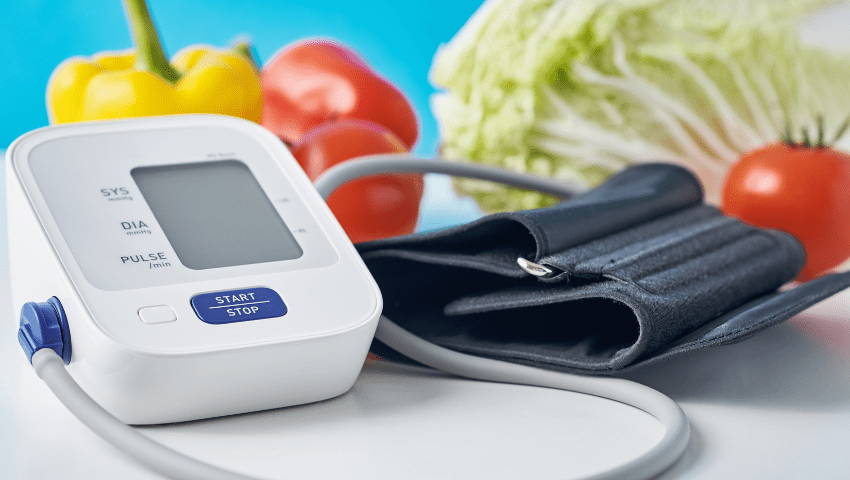
2. The Link between Diet and Blood Pressure
The foods we eat can directly influence blood pressure levels and making healthy dietary choices is crucial for maintaining optimal cardiovascular health. Here are some key points that explain the connection between diet and blood pressure:
- Sodium intake: Consuming high amounts of salt can lead to fluid retention and an increase in blood volume, resulting in elevated blood pressure. Reducing sodium intake, particularly from processed and packaged foods, can help lower blood pressure levels.
- Potassium intake: Potassium is a mineral that helps counterbalance the effects of sodium in the body. A diet rich in potassium, which includes foods like fruits, vegetables, and legumes, can promote healthy blood pressure by aiding in the relaxation of blood vessels and reducing sodium sensitivity.
- Magnesium intake: Magnesium plays a role in regulating blood pressure by relaxing blood vessels and improving blood flow. Including magnesium-rich foods such as leafy green vegetables, whole grains, nuts, and seeds in your diet may help maintain healthy blood pressure levels.
- Fiber consumption: A diet high in fiber has been associated with lower blood pressure levels. Fiber-rich foods, including fruits, vegetables, whole grains, and legumes, can help lower blood pressure by promoting satiety, improving digestion, and supporting heart health.
- Healthy fats: Replacing saturated and trans fats with healthier fats like monounsaturated fats (found in olive oil, avocados, and nuts) and polyunsaturated fats (found in fatty fish, flaxseeds, and walnuts) can have a positive impact on blood pressure. These healthier fats help reduce inflammation and support heart health.
- Limiting processed and sugary foods: High intake of processed and sugary foods has been linked to higher blood pressure levels. These foods are typically high in sodium, unhealthy fats, and added sugars, all of which can contribute to elevated blood pressure. Choosing whole, unprocessed foods and minimizing sugary beverages can help maintain healthy blood pressure.
- Alcohol consumption: Drinking excessive amounts of alcohol can raise blood pressure. It’s important to consume alcohol in moderation or avoid it altogether to help manage blood pressure levels.
By adopting a balanced and nutrient-rich diet, such as the DASH (Dietary Approaches to Stop Hypertension) diet, individuals can help control their blood pressure and reduce the risk of developing hypertension. It’s worth noting that diet alone may not completely cure this condition, but it plays a vital role in its management and prevention, along with other lifestyle modifications and medical interventions as recommended by healthcare professionals.

3. The DASH Diet: An Effective Approach
The Dietary Approaches to Stop Hypertension (DASH) diet is a well-researched eating plan proven to lower blood pressure. It emphasizes whole foods and encourages reducing sodium intake while increasing potassium, calcium, and magnesium consumption. Following the DASH diet involves incorporating various food groups into your daily meals.
Here is an overview of the recommended servings for each food group in a 2,000-calorie-a-day DASH diet:
Grains: Aim for 6 to 8 servings per day. One serving could be equivalent to 1/2 cup of cooked cereal, rice, or pasta, 1 slice of bread, or 1 ounce of dry cereal.
Vegetables: Aim for 4 to 5 servings per day. One serving is approximately 1 cup of raw leafy greens, 1/2 cup of cut-up raw or cooked vegetables, or 1/2 cup of vegetable juice.
Fruits: Aim for 4 to 5 servings per day. One serving is typically one medium-sized fruit, 1/2 cup of fresh, frozen, or canned fruit, or 1/2 cup of fruit juice.
Fat-free or low-fat dairy products: Aim for 2 to 3 servings per day. One serving can be 1 cup of milk or yogurt, or 1 1/2 ounces of cheese.
Lean meats, poultry, and fish: Limit your intake to six 1-ounce servings or fewer per day. One serving could be 1 ounce of cooked meat, poultry, or fish, or 1 egg.
Nuts, seeds, or legumes: Aim for 4 to 5 servings per week. One serving could be 1/3 cup of nuts, 2 tablespoons of peanut butter, 2 tablespoons of seeds, or 1/2 cup of cooked dried beans or peas (legumes).
Fats and oils: Aim for 2 to 3 servings per day. One serving could be 1 teaspoon of soft margarine, 1 teaspoon of vegetable oil, 1 tablespoon of mayonnaise, or 2 tablespoons of salad dressing.
Sweets and added sugars: Limit your intake to 5 servings or fewer per week. One serving could be 1 tablespoon of sugar, jelly, or jam, 1/2 cup of sorbet, or 1 cup of lemonade.
Please note that these are general guidelines, and individual calorie needs and dietary requirements may vary. Consulting with a healthcare professional or a registered dietitian can provide personalized guidance and help tailor a DASH diet plan that suits your specific needs and goals.
4. Limiting Salt Consumption
The foods that form the core of the DASH diet naturally contain lower levels of sodium, which means that following the DASH diet is likely to result in a reduction in salt consumption. By minimizing processed and packaged foods, avoiding adding salt during cooking or at the table, and opting for products that are labeled as no-salt or low-salt-added, you can significantly reduce your sodium intake. Reduce your consumption of restaurant food. When dining out, ask for dishes with less salt and request that no additional salt be added to your order.
Opt for flavorful herbs and spices to enhance the taste of your dishes instead.
5. Incorporating Potassium-Rich Foods
Potassium plays a crucial role in balancing sodium levels in the body. Including potassium-rich foods like bananas, oranges, spinach, and sweet potatoes in your diet can help counteract the negative effects of sodium and promote healthy blood pressure levels.
6. Emphasizing Fruits and Vegetables
Fruits and vegetables are excellent sources of essential vitamins, minerals, and fiber. Their natural compounds, such as antioxidants, can help lower blood pressure and reduce the risk of heart disease. Aim to incorporate a variety of colorful fruits and vegetables into your daily meals for optimal health benefits.
7. Choosing Whole Grains
Whole grains like oats, brown rice, and whole wheat bread are rich in fiber and nutrients. They have been linked to lower blood pressure levels and a reduced risk of heart disease. Swap refined grains for whole grains to enjoy their numerous health advantages.
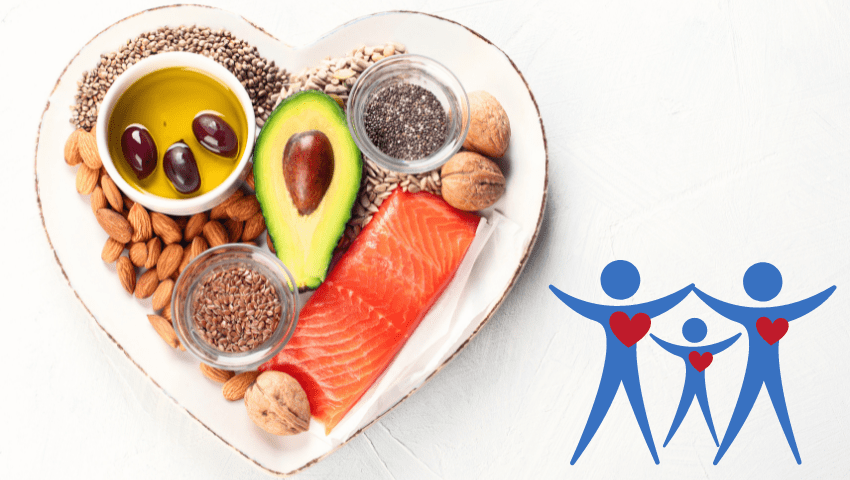
8. Healthy Fats for a Healthy Heart
Healthy fats, also known as unsaturated fats, are beneficial for the body and are an essential part of a balanced diet.
- Monounsaturated fats: These fats are liquid at room temperature and can solidify when refrigerated. They are found in foods such as olive oil, avocados, nuts (such as almonds, peanuts, and cashews), and seeds (such as pumpkin and sesame seeds). Monounsaturated fats can help improve blood cholesterol levels and decrease the risk of heart disease when consumed in moderation.
- Polyunsaturated fats: These fats are also liquid at room temperature and include two important types of fatty acids: omega-3 and omega-6. Omega-3 fatty acids are found in fatty fish (such as salmon, mackerel, and sardines), flaxseeds, chia seeds, and walnuts. They are known for their anti-inflammatory properties and have been associated with a reduced risk of heart disease. Omega-6 fatty acids are found in vegetable oils (such as soybean, sunflower, and corn oil) and certain nuts and seeds. They are important for overall health but should be consumed in balance with omega-3 fatty acids.
Unhealthy fats, also known as saturated fats and trans fats, can have negative effects on our health when consumed in excess. They are commonly found in processed foods, fast foods, fried foods, baked goods, and high-fat dairy products. Here are the characteristics of unhealthy fats:
- Saturated fats: These fats are usually solid at room temperature and are found in animal products like fatty meats, butter, full-fat dairy products (such as whole milk, cheese, and cream), and tropical oils (such as coconut and palm oil). Consuming too much saturated fat can raise low-density lipoprotein (LDL) cholesterol levels, also known as “bad” cholesterol, which increases the risk of heart disease.
- Trans fats: Trans fats are created through a process called hydrogenation, which turns liquid oils into solid fats. They are often found in commercially baked goods (such as cookies, pastries, and cakes), fried foods, and some margarines. Trans fats are particularly harmful as they not only increase LDL cholesterol levels but also decrease high-density lipoprotein (HDL) cholesterol levels, also known as “good” cholesterol. This combination significantly increases the risk of heart disease.
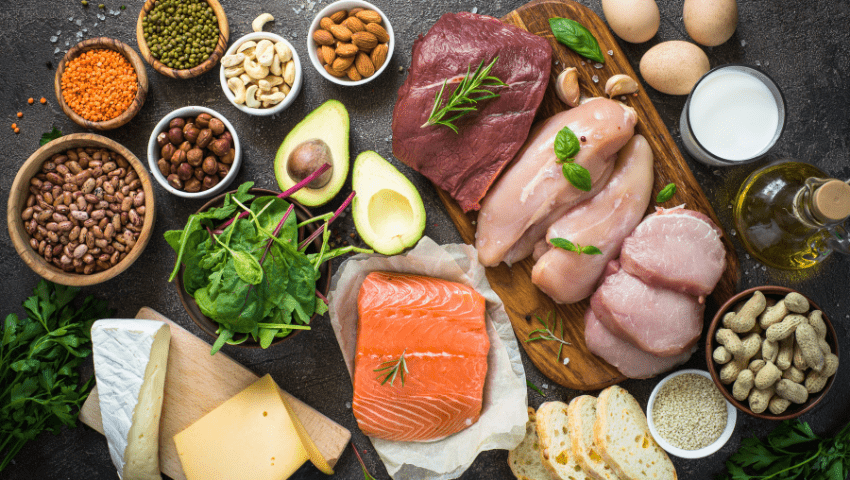
9. Lean Protein Sources
Lean protein refers to protein sources that are low in saturated fat and cholesterol, making them beneficial for managing high blood pressure. These protein sources offer a plethora of health benefits and play a crucial role in various bodily functions.
Lean Protein Sources: When it comes to lean protein, there are several choices that can nourish your body without adding excessive fat:
- Poultry: Skinless chicken breast and turkey breast are exceptional sources of lean protein. They boast low levels of saturated fat while providing essential amino acids, as well as a wide array of vitamins and minerals. For optimal health benefits, opt for baked, grilled, or roasted preparations instead of fried options.
- Fish and Seafood: Fatty fish such as salmon, tuna, mackerel, and trout are not only rich in lean protein but also contain omega-3 fatty acids, which are renowned for their heart-healthy properties. Additionally, other seafood options like shrimp, crab, and lobster are low in fat and high in protein, making them ideal choices for a lean protein diet.
- Legumes: Beans, lentils, chickpeas, and other legumes are powerhouses of protein. Not only are they packed with this essential nutrient, but they also provide dietary fiber, vitamins, and minerals. Legumes are excellent plant-based sources of lean protein and have been shown to promote heart health and facilitate weight management.
- Greek Yogurt: Greek yogurt offers a creamy and protein-rich alternative, particularly when compared to regular yogurt. It contains less lactose and provides a higher concentration of protein per serving. To avoid unnecessary added sugars, opt for plain, unsweetened Greek yogurt and savor it as a satisfying snack or incorporate it into your favorite recipes.
- Eggs: Eggs are versatile and affordable sources of lean protein. They encompass all nine essential amino acids and are packed with essential nutrients like choline and vitamin B12. While the yolk contains cholesterol, the egg white itself is virtually fat-free and constitutes the protein-rich component of the egg.
- Tofu and Tempeh: Tofu, derived from soybeans, and tempeh, a fermented soybean product, serve as popular plant-based protein sources among vegetarians and vegans. Both tofu and tempeh are versatile ingredients that can be incorporated into a wide variety of dishes while providing a substantial amount of lean protein.
Lean protein sources, especially those rich in omega-3 fatty acids like fatty fish, have been associated with a lower risk of heart disease. Substituting saturated and trans fats with lean protein can improve blood cholesterol levels, consequently reducing the risk of cardiovascular issues.
10. Caffeine and Alcohol Consumption
Excessive alcohol consumption can raise blood pressure and negatively impact overall health. If you choose to drink alcohol, do so in moderation. The recommended limits are one drink per day for women and up to two drinks per day for men.
Caffeine can temporarily increase blood pressure, especially in individuals who are sensitive to its effects. It’s advisable to moderate your caffeine intake by limiting coffee, tea, and energy drink consumption, particularly if you notice a rise in your blood pressure readings.
11. Seeking Professional Guidance
While adopting a high blood pressure diet is beneficial, it’s essential to seek professional guidance from a healthcare provider or a registered dietitian. They can provide personalized recommendations based on your specific needs and help you create a comprehensive plan to manage your blood pressure effectively.
12. Conclusion
Adopting a high blood pressure diet is a fundamental step in managing hypertension and promoting overall cardiovascular health. By incorporating the principles of the DASH diet, reducing sodium intake, including potassium-rich foods, choosing healthy fats, and focusing on fiber, you can make significant progress in controlling your blood pressure. Combining these dietary modifications with regular exercise, stress reduction techniques, and maintaining a healthy weight will further enhance the effectiveness of your blood pressure management plan.
Remember, managing high blood pressure is a lifelong journey that requires commitment and consistency. Consult with your healthcare provider or a registered dietitian for personalized guidance and recommendations based on your specific needs. By taking control of your diet and making positive lifestyle changes, you can significantly improve your blood pressure levels and reduce the risk of complications associated with hypertension.
Don’t wait any longer to prioritize your cardiovascular health. Start implementing the principles of a high blood pressure diet today and take the necessary steps to lead a healthier, happier life.

13. FAQ (Frequently Asked Questions)
- Can high blood pressure be cured by following a specific diet?
While a healthy diet can help manage and control high blood pressure, it’s important to note that it may not cure the condition entirely. However, adopting a high blood pressure diet can significantly improve your overall cardiovascular health and reduce the risk of complications.
- Are there any specific foods that instantly lower blood pressure?
While there are no foods that can instantly lower blood pressure, certain foods like bananas, leafy greens, berries, and oats have been associated with beneficial effects on blood pressure levels. It’s important to incorporate these foods into a well-balanced diet for long-term benefits. - How long does it take for dietary changes to impact blood pressure levels?
The impact of dietary changes on blood pressure levels can vary from person to person. In some cases, individuals may experience noticeable changes within a few weeks, while others may take longer. Consistency and adherence to a healthy diet are key factors in achieving and maintaining optimal blood pressure levels. - Can I still enjoy restaurant meals while following a high blood pressure diet?
Yes, you can still enjoy restaurant meals while following a high blood pressure diet. Opt for dishes that are prepared with fresh ingredients, request modifications to reduce sodium, and choose lean protein options. Additionally, be mindful of portion sizes and avoid high-sodium sauces or dressings. It’s also helpful to check the menu in advance and choose restaurants that offer healthier options or allow customization of dishes to suit your dietary needs. - Is it necessary to completely eliminate salt from my diet?
While reducing sodium intake is important for managing high blood pressure, it’s not necessary to completely eliminate salt from your diet. The key is to consume salt in moderation and choose natural, unprocessed foods over heavily salted processed foods. Opt for herbs, spices, and other flavorings to enhance the taste of your meals instead of relying solely on salt. - Can I still enjoy sweet treats while following a high blood pressure diet?
Yes, you can still enjoy sweet treats occasionally while following a high blood pressure diet. However, it’s important to be mindful of portion sizes and choose healthier alternatives. Opt for fruit-based desserts, dark chocolate with higher cocoa content, or homemade treats using healthier ingredients like whole grains and natural sweeteners. - Can weight loss help lower blood pressure?
Yes, weight loss can have a positive impact on blood pressure levels. If you are overweight or obese, losing even a modest amount of weight can help lower blood pressure. Adopting a high blood pressure diet and incorporating regular physical activity are key components of a weight loss plan aimed at improving overall cardiovascular health. - Are there any beverages that can help lower blood pressure?
Certain beverages, such as herbal teas, hibiscus tea, green tea, and beet juice, have been associated with potential benefits for lowering blood pressure. However, it’s important to note that these beverages should be consumed as part of a comprehensive dietary approach and not as standalone remedies. Consult with your healthcare provider for personalized recommendations. - How long should I follow a high blood pressure diet?
A high blood pressure diet should ideally be adopted as a long-term lifestyle change rather than a temporary solution. It’s important to maintain healthy eating habits consistently to manage blood pressure effectively. Regular monitoring of blood pressure and periodic consultations with healthcare professionals will guide you on the duration of following the diet.
